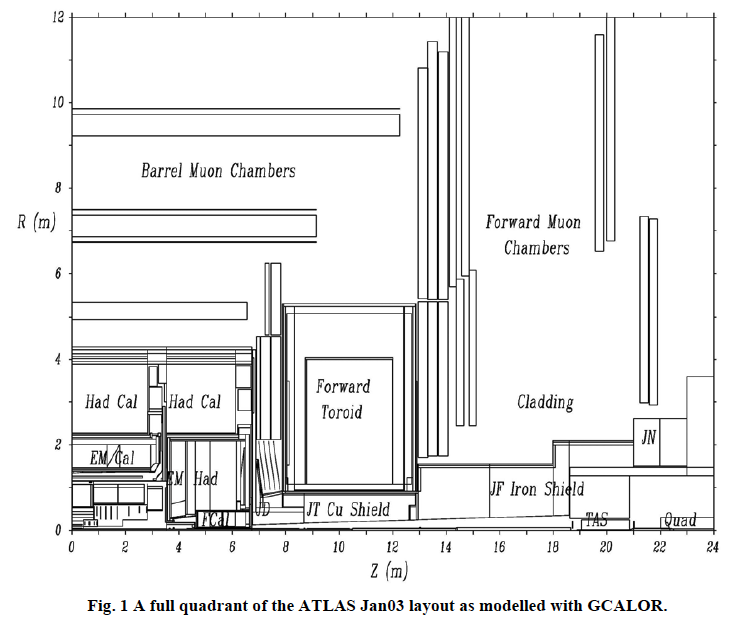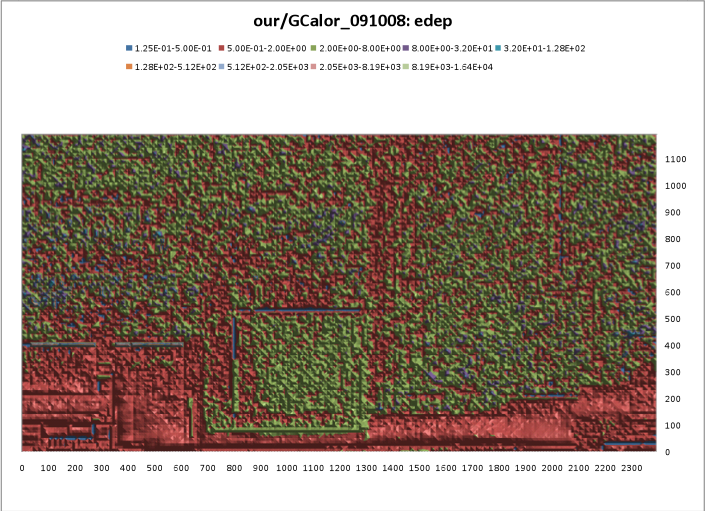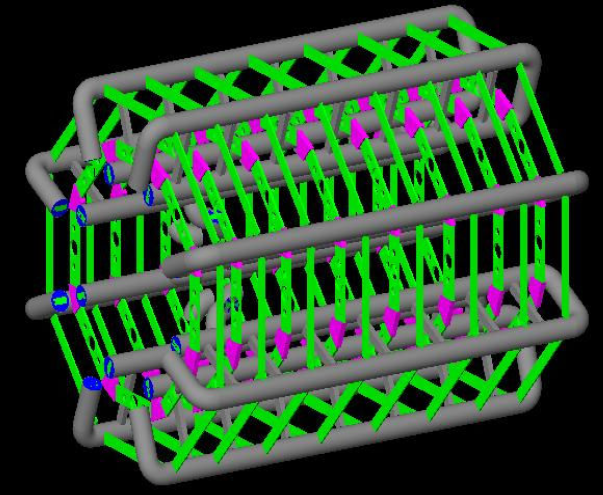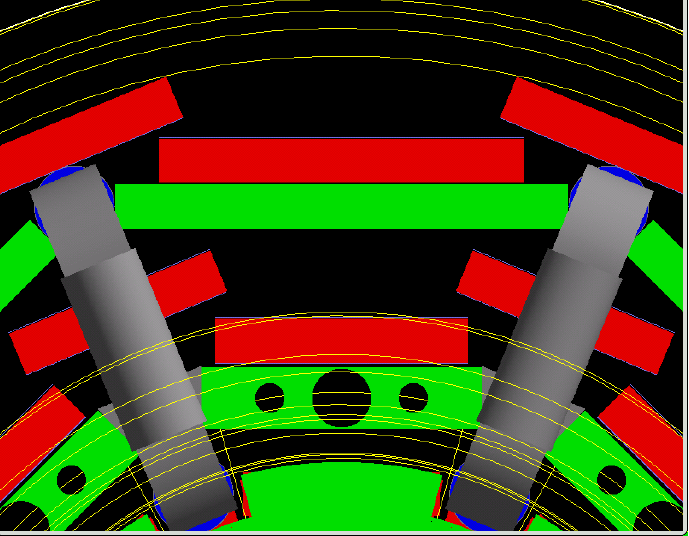...
It is generally accepted that the physics modeling in the FLUKA package gives the best agreement with data for the low-energy neutrons and photons that are important here. On the other hand, ATLAS has little expertise with FLUKA but has much experience with Geant4, which is regarded as having a more flexible geometry definition. We therefore decided to use FLUGG, which couples Geant4 geometry with FLUKA physics.
Validation against previous studies
The earlier studies made by the ATLAS Radiation Background Task Force (RBTF) have been reported in ATL-GEN-2005-001. The first figure shows a quadrant of the layout, for z <= 24 m and r <= 12 m, as modeled in the report.
The next figure is the calculated neutron flux.
We used the same geometry, materials, etc as in this report, and compare our FLUGG results with the G3/GCALOR results from the Task Force. The agreement is goodthe RBTF. This is done by plotting the ratio of calculated quantities as a color map in (z,r) plots. Here are two examples for energy deposition and neutron respectively from 2009.
The differences between our results and RBTF results are now resolved. However, we will not post the new comparison plots since a uniform color is very boring! The agreement between FLUGG and G3/GCALOR is good, and the new application has been validated.
Start-Up for 2009-2010
There is already a very detailed Geant4 description of the ATLAS detector used in physics event simulation; however, it is far too complicated for this application. Instead, we will update the validation geometry to be consistent with the full ATLAS description, concentrating on those regions that affect background the most, e.g.
- Beam line and shielding.
- Gap between barrel and toroid.
- Cavern outline
We will also add the large missing elements such as
- Barrel toroid
- More detailed cavern dimensions and outline, including the two large access shafts.
- Previously missing barrel toroid.
- Barrel muon chambers used to be modeled as cylinders, now modeled as flat packages.
- Proper position of endcap muon chambers.
Some simplifications have been Some simplifications will be made, especially detector internal geometries which are important for detector response but not for this application. It is important to maintain the proper isotopic composition of materials as neutron cross sections are sensitive.
We will calculate the background for each of these changes individually in order to understand their effects.
Validation against data
Now that there is data from LHC, the calculations can be compared with the measured counting rates in muon detectors. A minimum instantaneous luminosity is necessary so cavern background is not overwhelmed by cosmic rays, electronic noise and so on. While some detector components may need a minimum luminosity of ~ 10^31^ cm^-2^ sec^-1, there are studies that can be undertaken with the data already in hand. For example, there are indications that the barrel MDT chambers see the predicted spatial distibution.
Cavern background files
The calculated background can be added to signal Monte Carlo events to simulate what a real event would look like in the presence of background. We define "scoring volumes" around muon chambers in the FLUGG application, and write out all particles that cross into these scoring volumes. This file of 4-vectors is then used as input in normal ATLAS simulation. Each particle is tracked through ATLAS, depositing energy in the detector like particles from other sources. We add these energy deposits to those from the signal Monte Carlo event, and then simulate the detector's electronic response to this combination of signal plus backgroundExpected radiation levels and counting rates will be compared with data after beam turn-on in late 2009. Differences have to be traced back to possible inaccuracies in the modeling.
sLHC Studies
ATLAS will be replacing the Inner Detector tracker for Super LHC. It is expected to be an all-Silicon detector with pixels and strips. We believe additional shielding is needed for the FCAL. It is also expected to replace part of the muon spectrometer detectors. The scope of the muon upgrade has great uncertainty at this time. It can be as little as replacing the endcap detectors at small radii, or it can be replacing all muon detectors, depending on the background level. One of the goals of the cavern background calculation is to provide a more reliable prediction.
Status
As of May 20092010, the validation against RBTF is complete, the start-up geometry and materials used by the Radiation Trask Force have been implemented. First results from FLUGG are available. The next step is to define the outputs necessary for comparison with the Task Force results.Work has started on the 2009 start-up geometry.has been implemented, and preliminary cavern background files have been written out. We are now working on using these background files in ATLAS simulation. Comparison with data is starting.
Meetings and Material
Agendas can be found at http://indico.cern.ch/categoryDisplay.py?categId=225 with schedules and connection details.
...







